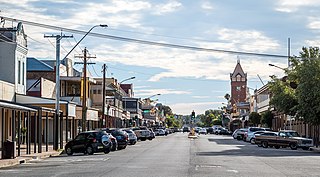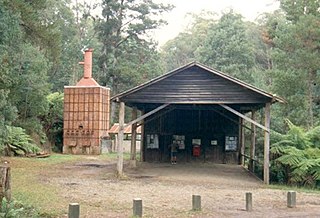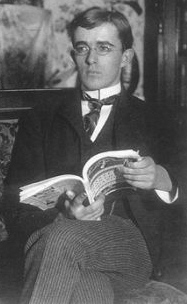
Irving Langmuir was an American chemist and physicist. He was awarded the Nobel Prize in Chemistry in 1932 for his work in surface chemistry.
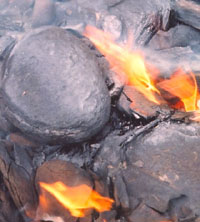
Oil shale is an organic-rich fine-grained sedimentary rock containing kerogen from which liquid hydrocarbons can be produced, called shale oil. Shale oil is a substitute for conventional crude oil; however, extracting shale oil from oil shale is more costly than the production of conventional crude oil both financially and in terms of its environmental impact. Deposits of oil shale occur around the world, including major deposits in the United States. A 2016 estimate of global deposits set the total world resources of oil shale equivalent of 6.05 trillion barrels of oil in place.
John StenhouseFRS FRSE FIC FCS was a Scottish chemist. In 1854, he invented one of the first practical respirators.

James Young was a Scottish chemist best known for his method of distilling paraffin from coal and oil shales. He is often referred to as Paraffin Young.
Shale oil is an unconventional oil produced from oil shale rock fragments by pyrolysis, hydrogenation, or thermal dissolution. These processes convert the organic matter within the rock (kerogen) into synthetic oil and gas. The resulting oil can be used immediately as a fuel or upgraded to meet refinery feedstock specifications by adding hydrogen and removing impurities such as sulfur and nitrogen. The refined products can be used for the same purposes as those derived from crude oil.
Craig J. Hawker is an Australian-born chemist. His research has focused on the interface between organic and polymer chemistry with emphasis on the design, synthesis, and application of well-defined macromolecular structures in biotechnology, microelectronics and surface science. Hawker holds more than 45 U.S. patents and has co-authored over 300 papers in the areas of nanotechnology, materials science and chemistry. He was listed as one of the Top 100 most cited chemists worldwide over the decade 1992–2002. and again in 2000-2010. Hawker is currently the director of the California Nanosystems Institute and holds a number of other laboratory directorships at the University of California, Santa Barbara.
William Marias Malisoff, also William Marias Malisov, was born in Ekaterinoslav, Russia, now Dnipro Ukraine, immigrated to the United States as a child, and became a naturalized United States citizen. Malisoff obtained a BS in 1916, an MA in 1917 and CE in 1918 degrees from Columbia University and a PhD. from New York University in 1925. Malisoff was an associate professor of biochemistry and lecturer in philosophy at University of Pennsylvania from 1922 to 1934. From 1934 to 1942 he was associate professor of biochemistry at Brooklyn Polytechnic Institute. In 1938-1939 Malisoff was delegated NEC member of University Federation for Democracy and Intellectual Freedom. He owned and operated United Laboratories, Inc, a company principally engaged in research on lubricating processes for chemical products, war industries and biochemistry. From 1936 to 1942 Malisoff was a regular contributor on science and technology to the New York Times Book Review. Malisoff alongside with Niels Bohr, Bertrand Russell, Ernest Nagel et al sat on the Advisory Committee of the International Encyclopedia of Unified Science. From 1934 to 1944 he was on the editorial board of Philosophy of Science journal. In 1945 Malisoff was connected with the Institute for the Unity of Science for a short time. Chemical researcher Kapok-Milkweed project, United States Navy, 1944; Essex College of Medicine, Newark, New Jersey, 1945-1946; Director of research Longevity Research Foundation, New York, since 1946.

Gwalia is a former gold-mining town located 233 kilometres north of Kalgoorlie and 828 kilometres east of Perth in Western Australia's Great Victoria Desert. Today, Gwalia is essentially a ghost town, having been largely deserted since the main source of employment, the Sons of Gwalia gold mine, closed in 1963. Just four kilometres north is the town of Leonora, which remains the hub for the area's mining and pastoral industries.

Sir Shanti Swaroop Bhatnagar OBE, FNI, FASc, FRS, FRIC, FInstP was an Indian colloid chemist, academic and scientific administrator. The first director-general of the Council of Scientific and Industrial Research (CSIR), he is revered as the "father of research laboratories" in India. He was also the first Chairman of the University Grants Commission(India) (UGC).
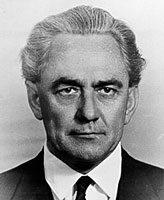
Samuel Warren Carey AO was an Australian geologist and a professor at the University of Tasmania. He was an early advocate of the theory of continental drift. His work on plate tectonics reconstructions led him to develop the Expanding Earth hypothesis.
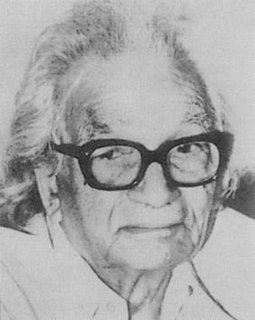
Salimuzzaman Siddiqui(Urdu: سلیم الزّماں صدّیقی [səˈliːmʊzzəmɑːn sɪˈd̪d̪iːqi]; 19 October 1897 – 14 April 1994),HI, MBE, SI, FPAS, FRS was a Pakistani organic chemist specialising in natural product chemistry.

Shale oil extraction is an industrial process for unconventional oil production. This process converts kerogen in oil shale into shale oil by pyrolysis, hydrogenation, or thermal dissolution. The resultant shale oil is used as fuel oil or upgraded to meet refinery feedstock specifications by adding hydrogen and removing sulfur and nitrogen impurities.

Sir George Thomas Beilby was a British chemist.
Combustion Resources, Inc. was a consulting company based in Provo, Utah, United States. It provided consulting services in the fields of fuel and combustion, such as testing of flow and mixing systems, reactor design, gas and particle sampling, gasification modeling, and shale oil extraction design and testing. The company was incorporated in 1995 as a spin-off from the Center for Advanced Combustion Engineering Research, joint collaboration between Brigham Young University and the University of Utah.
Edward Giles Stone was an Australian engineer prominent in many innovative, often daringly and spectacular, aspects of early reinforced concrete constructions in Australia. He was also involved in cement manufacture. He was briefly a pioneer in prefab housing but that industry was destined to use timber, not concrete plates.
Vladimir Haensel was an American chemical engineer who invented the platforming process - a platinum catalytic process for reforming petroleum hydrocarbons into gasoline. In addition, he was influential in the creation of catalytic converters for automobiles.
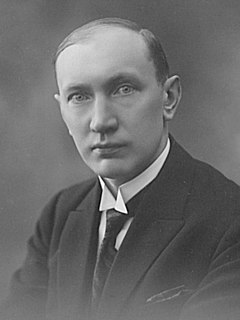
Paul Nikolai Kogerman was an Estonian chemist and founder of modern research in oil shale.
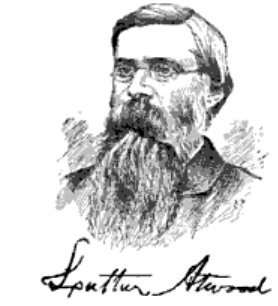
Luther Atwood was an American chemist. He is known for creating new chemical products from the distillation of coal and petroleum.
Sasanka Chandra Bhattacharyya (1918–2013) was an Indian natural product chemist and the director of Bose Institute, Kolkata. He was known for his studies on structures and configurations of terpenoids and synthesis of Vetiver Oil and natural musk. He was the vice-president of the Indian National Science Academy and was an elected fellow of the academy as well as the Indian Academy of Sciences. The Council of Scientific and Industrial Research, the apex agency of the Government of India for scientific research, awarded him the Shanti Swarup Bhatnagar Prize for Science and Technology, one of the highest Indian science awards, in 1962, for his contributions to chemical sciences.
